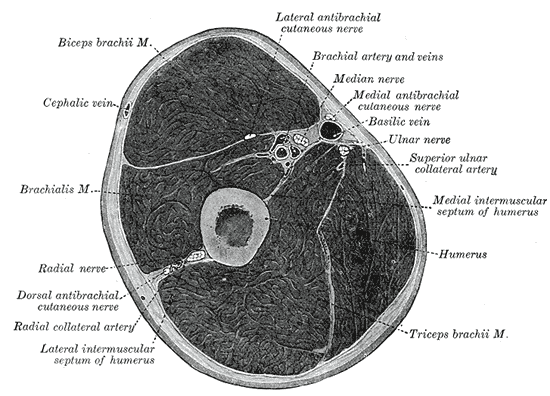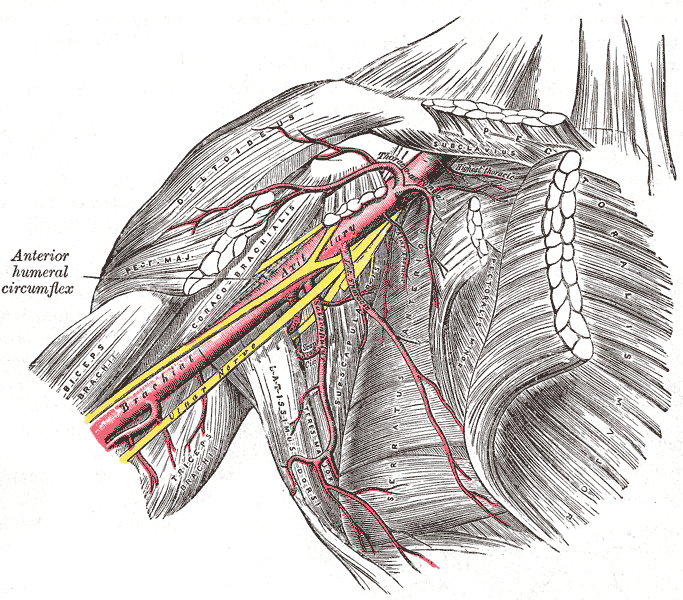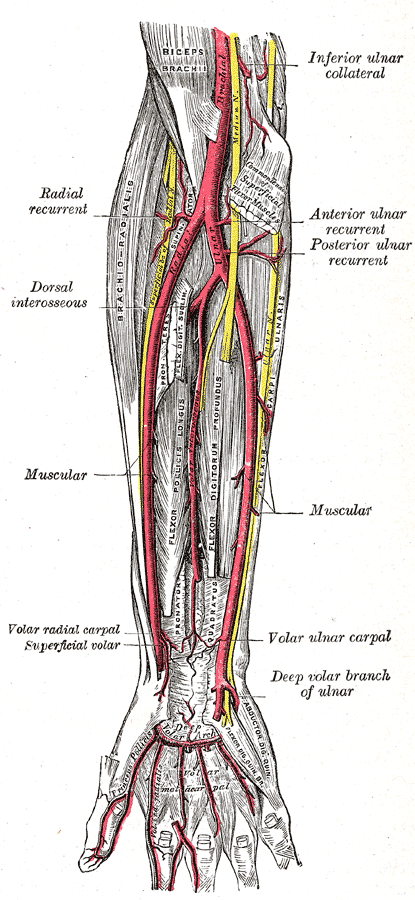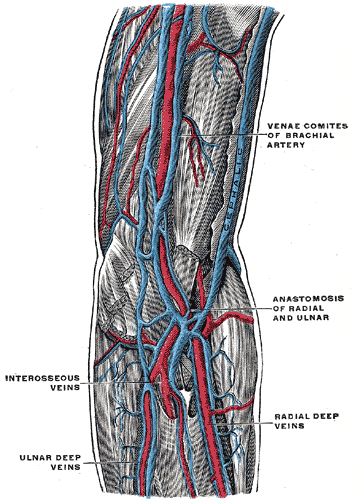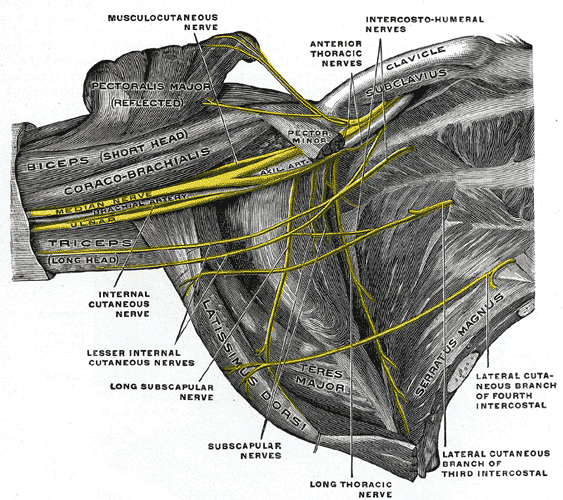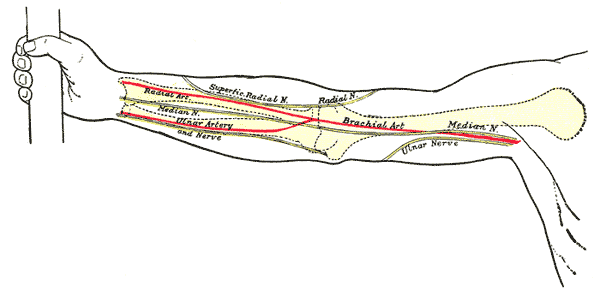Brachial artery
| Cardiology Network |
 Discuss Brachial artery further in the WikiDoc Cardiology Network |
| Adult Congenital |
|---|
| Biomarkers |
| Cardiac Rehabilitation |
| Congestive Heart Failure |
| CT Angiography |
| Echocardiography |
| Electrophysiology |
| Cardiology General |
| Genetics |
| Health Economics |
| Hypertension |
| Interventional Cardiology |
| MRI |
| Nuclear Cardiology |
| Peripheral Arterial Disease |
| Prevention |
| Public Policy |
| Pulmonary Embolism |
| Stable Angina |
| Valvular Heart Disease |
| Vascular Medicine |
Editor-In-Chief: C. Michael Gibson, M.S., M.D. [1]
The brachial artery is the major blood vessel of the upper arm.
It is a continuation of the axillary artery and it originates from the lower margin of teres major muscle and continues down the arm, until it reaches the cubital fossa at the elbow. It then ends by dividing into the radial and ulnar arteries which run down the forearm. In some individuals, the bifurcation occurs much earlier and the ulnar and radial arteries extend through the upper arm.
The brachial artery has several branches along its course. These supply the muscles of the upper arm, such as biceps brachii muscle and triceps brachii muscle, and contribute to important anastomotic networks of the elbow and (as the axillary artery) the shoulder.
The pulse of the brachial artery is palpable on the anterior aspect of the elbow and, with the use of a stethoscope and sphygmomanometer (blood pressure cuff) often used to measure the blood pressure.
Branches
- Profunda brachii artery (also known as the deep brachial artery)
- Superior ulnar collateral artery
- Inferior branch
- Radial artery (a terminal branch)
Additional images
-
Cross-section through the middle of upper arm.
-
The axillary artery and its branches.
-
The radial and ulnar arteries.
-
Ulnar and radial arteries. Deep view.
-
The deep veins of the upper extremity.
-
The right brachial plexus (infraclavicular portion) in the axillary fossa; viewed from below and in front.
-
Front of right upper extremity, showing surface markings for bones, arteries, and nerves.
